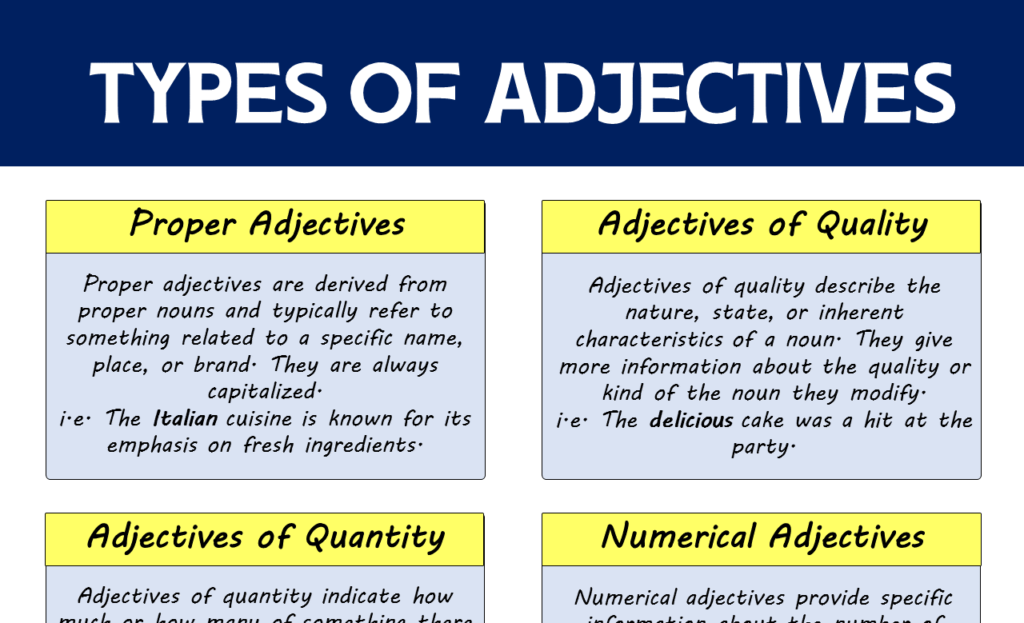When you’re speaking or writing in English, you might often find yourself wanting to use several adjectives to describe something. For example, you might want to talk about a “big red apple” or a “small old wooden chair.”
But did you know there’s a specific order that adjectives should follow in English? Using adjectives in the right order makes your sentences clearer and your communication more effective.
Here’s a simple guide to help you remember the correct order when you’re using more than one adjective to describe a noun.
Order of Adjectives in English
1. Number or Quantity
Start with words that tell us how many items there are, or how much of something you’re talking about. For example:
- One
- Two
- A few
- Many
Example: three cats, many people
2. Opinion or Quality
Next, use adjectives that express what you think about the noun or its inherent qualities. These can be subjective opinions or widely agreed-upon characteristics.
- Nice
- Ugly
- Beautiful
Example: beautiful flowers, nice day
3. Size
This includes adjectives that describe the overall dimensions or magnitude of the noun.
- Large
- Small
- Tall
Example: tall man, small mouse
4. Shape
If the shape of the noun is relevant, you mention it after the size.
- Round
- Square
- Triangular
Example: round table, square box
5. Age
Mention how old the noun is next. This could be actual ages or more general terms indicating age.
- Two-year-old
- Young
- Ancient
Example: old cheese, ancient ruins
6. Color
Descriptions of color usually come just before the origin or material of the noun.
- Yellow
- Brownish
- Bright
Example: yellow banana, green shirt
7. Origin
This refers to where something comes from.
- Italian
- Medieval
- Victorian
Example: Italian pasta, Victorian gown
8. Material
What the item is made from can be mentioned after the origin.
- Wooden
- Glass
- Metal
Example: wooden bench, glass vase
9. Purpose
Finally, if the noun has a specific purpose, this adjective tells us what it’s for. These are often formed by adding “-ing” to a verb.
- Cooking (e.g., cooking pot)
- Driving (e.g., driving gloves)
Example: racing car, sleeping bag
Putting It All Together
If you were to describe a chair, you might say: “I bought an old brown wooden dining chair.” Here’s why:
- “Old” tells the age.
- “Brown” describes the color.
- “Wooden” tells us the material.
- “Dining” explains the purpose of the chair.

Using this order keeps your descriptions clear and easy to understand. Remember, you might not always use all these types of adjectives every time, but when you do, this is the order they should follow. This makes your English sound more natural and correct. So next time you’re describing something, keep this order in mind!


